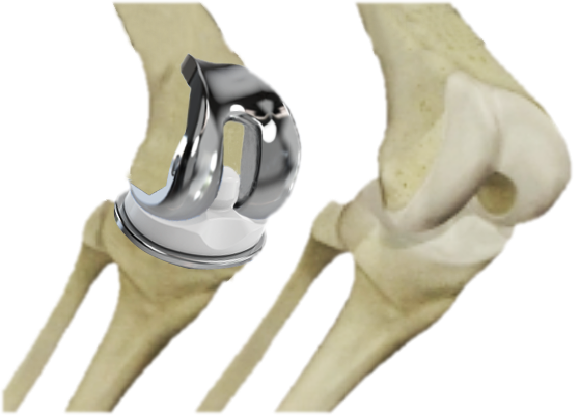Advantage analysis of rotating tibial tray TKA
 Mar. 10, 2021
Mar. 10, 2021
Advantage analysis of rotating tibial tray TKA
The number of total knee arthroplasty (TKA) patients increased year by year, and showed a trend of younger. The range of motion is an important factor affecting the satisfaction of TKA results in relatively young patients. Rotating platform prosthesis can adapt to deep flexion, and reduce the risk of aseptic loosening and polyethylene wear.
When congruent femoral-PE rotation occurs, the majority of axial rotation (unidirectional motion) occurs on the inferior aspect of the mobile PE bearing, between the PE bearing and the tibial tray. whereas the maiority of AP translation (unidirectional) occurs on the superior aspect of the bearing, between the PE bearing and the femoral component. This is in contrast to fixed-bearing designs in which all axial rotation and AP translation (multidirectional motion) occur on the superior aspect of the PE insert.

For patients with severe malalignment and ligamentous incompetence necessitate the use of constrained fixed-bearing knees, especially in the elderly patients.
The SKII PS /SKII RPS total knee prosthesis is provided by JUST. The fixed tibial bearing and rotated tibial bearing can be flexibly switched to meet the needs of different patients.

Stability of fixed interfaceClinically, revision due to osteolysis is relatively common in young patients.The rotational platform prosthesis replacement can achieve a high degree of fit of the femoral tibial joint surface, at the same time, reduce the restrictive force of the joint and achieve low wear through the unidirectional rotation between the tibial plateau and the tibial plateau pad; the larger contact area between the platform pad and the components makes the wear particles smaller, thus reducing the risk of osteolysis.Studies have shown that compared with fixed platform, the revision rate of osteolysis in patients with rotary platform prosthesis can be reduced by 9.7%, showing a good long-term survival rate.
Achieve extreme flexibilityAxial rotation is one of the important considerations for obtaining high flexion.Clinically, patients who received rotary platform prosthesis replacement had better stair climbing ability, and the study was statistically significant.The rotating platform prosthesis can simulate the normal knee joint movement, provide flexible forward and backward displacement and lower rotation limitation, promote tibia rotation in high flexion, and ensure the larger contact area of the prosthesis within the flexion range, which can achieve extreme buckling stability.

Excellent automatic alignment mechanism to achieve good movementProper patellar trajectory is essential for TKA function. Poor patellar trajectory is considered to be the cause of decreased range of motion, anterior knee pain and prosthesis wear.Rotation of the rotating platform polyethylene insert with the femoral component, independent of the rotation of the firmly fixed tibial tray, should reduce stresses transmitted to the fixation interface between component and bone and create the potential for self-alignment of the polyethylene bearing with the femoral component. self-alignment is advantageous for optimal TKA kinematics and for maintenance of acceptable polvethylene surface stresses and stresses exerted on posterior cruciate- substituting tibial posts. An additional advantage of the self-aligning feature of rotating platform TKA systems is the potential facilitation.














